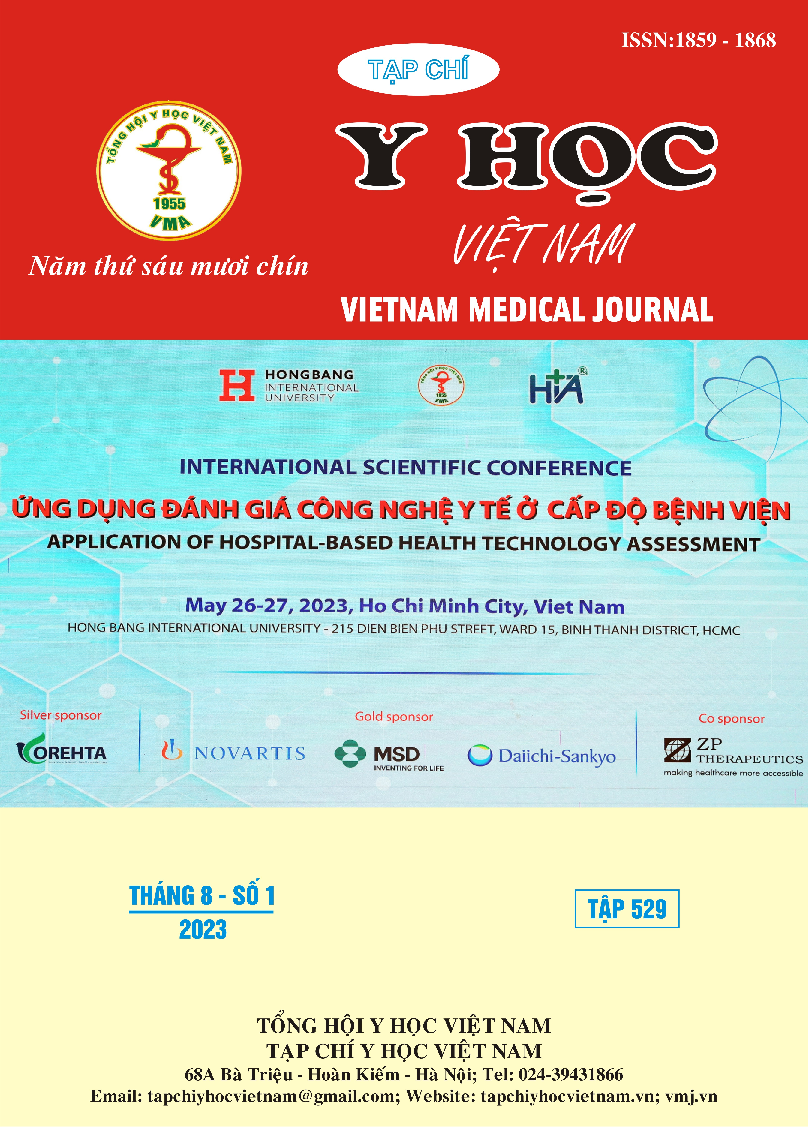TỐI ƯU HÓA KHOẢNG DẪN TRUYỀN NHĨ THẤT Ở BỆNH NHÂN ĐẶT MÁY TẠO NHỊP HỆ THỐNG DẪN TRUYỀN
Nội dung chính của bài viết
Tóm tắt
Suy tim là một hội chứng lâm sàng và là hậu quả của nhiều nguyên nhân bệnh học khác nhau. Rối loạn nhịp là vấn đề thường gặp ở bệnh nhân suy tim. Gần đây, người ta đã xác nhận các bất thường về điện học của tim có thể gây ra bệnh cơ tim và suy tim. Có 5 dạng bất thường điện học có thể gây suy tim đã được xác nhận bao gồm: rung nhĩ, nhanh nhĩ, ngoại tâm thu thất, nhanh thất và mất đồng bộ nhĩ thất2. Các bất thường điện học này gây suy tim thông qua các cơ chế bệnh học do nhịp tim không đều, bệnh cơ tim do nhịp nhanh, mất bộ đồng thất và nhĩ thất phối hợp không tối ưu, từ đó gây tái cấu trúc tim và gây suy tim2. Ở bệnh nhân đặt máy tạo nhịp, sẽ xuất hiện mất đồng bộ thất, mất đồng bộ nhĩ thất (nếu khoảng dẫn truyền nhĩ thất không tối ưu). Để giảm thiểu nguy cơ tiến triển gây ra bệnh cơ tim do tạo nhịp, ta có thể chọn lựa các phương pháp sau: (1) ưu tiên tạo nhịp nhĩ 6; (2) lập trình giảm thiểu tạo nhịp thất 6; (3) Đặt máy tái đồng bộ tim và (4) tối ưu hóa khoảng dẫn truyền nhĩ thất9. Gần đây, máy tạo nhịp His là phương pháp tạo nhịp mới với nhiều ưu điểm giúp duy trì đồng bộ nội thất. Đặc biệt là ở các bệnh nhân có QRS dãn rộng sau đặt máy tái đồng bộ tim thì cần xem xét phối hợp tạo nhịp bó His và tối ưu hóa khoảng dẫn truyền nhĩ thất để thu hẹp QRS và mang lại cải thiện lâm sàng cho bệnh. Chúng tôi trình bày 1 ca lâm sàng có chỉ định đặt máy tái đồng bộ tim CRT, tuy nhiên sau đặt máy QRS lại dãn rộng thêm 45ms mang lại tiên lượng xấu. Bệnh nhân sau đó được chuyển vị trí tạo nhịp tim phải lên bó His (HOT-CRT) kết hợp tối ưu hóa khoảng dẫn truyền nhĩ thất đã giúp QRS hẹp lại 20ms so với trước đặt máy và hẹp lại 65ms so với tạo nhịp CRT, từ đó mang lại sự cải thiện tình trạng suy tim và phân suất tống máu thất trái cho bệnh nhân.
Chi tiết bài viết
Tài liệu tham khảo
2. Frits W.P (2022) ”Electrical management of heart failure_ from pathophysiology to treatment”, European Heart Journal (2022) 00, pp. 1–14
3. Khurshid S (2018) "Reversal of Pacing-Induced Cardiomyopathy After CRT", JACC Clin Electrophysiol, 4(2), pp:168-177.
4. Padala S.K (2021) "Anatomy of the cardiac conduction system", Pacing Clin Electrophysiol. 44(1), pp15-25.
5. 1Khurshid S (2018) "Reversal of Pacing-Induced Cardiomyopathy After CRT", JACC Clin Electrophysiol, 4(2), pp:168-177.
6. Ellenbogen K.A (2017), “Clinical cardiac pacing, defbrillation, and resynchronization therapy”, Elsevier, 5th editon, pp. 223-243.
7. Sharma P.S (2021), “Conduction System Pacing for Cardiac Resynchronisation”, Arrhythmia & Electrophysiology Review; 10(1), pp51–58.
8. Salden F.C.W.M et al (2022) "Pacing therapy for atrioventriculardromotropathy: a combined computational–experimental–clinical study", Europace, 2022(24),pp. 784–795
9. Cheng S, et al (2009) “Long-term outcomes in individuals with a prolonged PR interval or first-degree atrioventricular block”. JAMA 301(257), pp. 1–7.
10. Glikson M (2021) "2021 ESC Guidelines on cardiac pacing and cardiac resynchronization therapy: Developed by the Task Force on cardiac pacing and cardiac resynchronization therapy of the European Society of Cardiology (ESC) With the special contribution of the European Heart Rhythm Association (EHRA)", European Heart Journal, 42(35), pp: 3427–3520.


